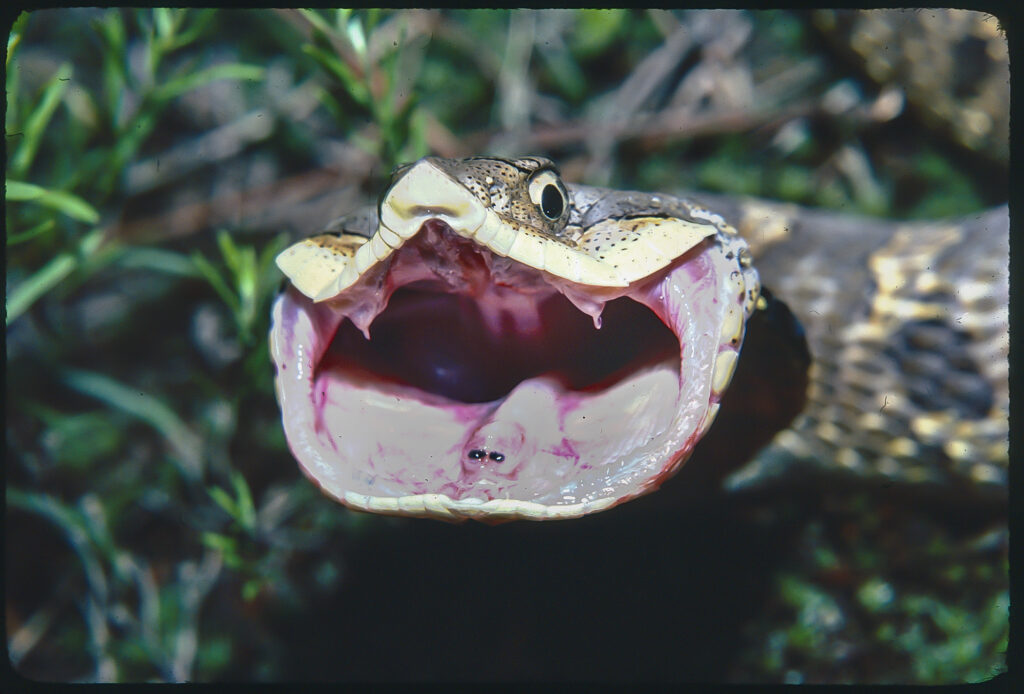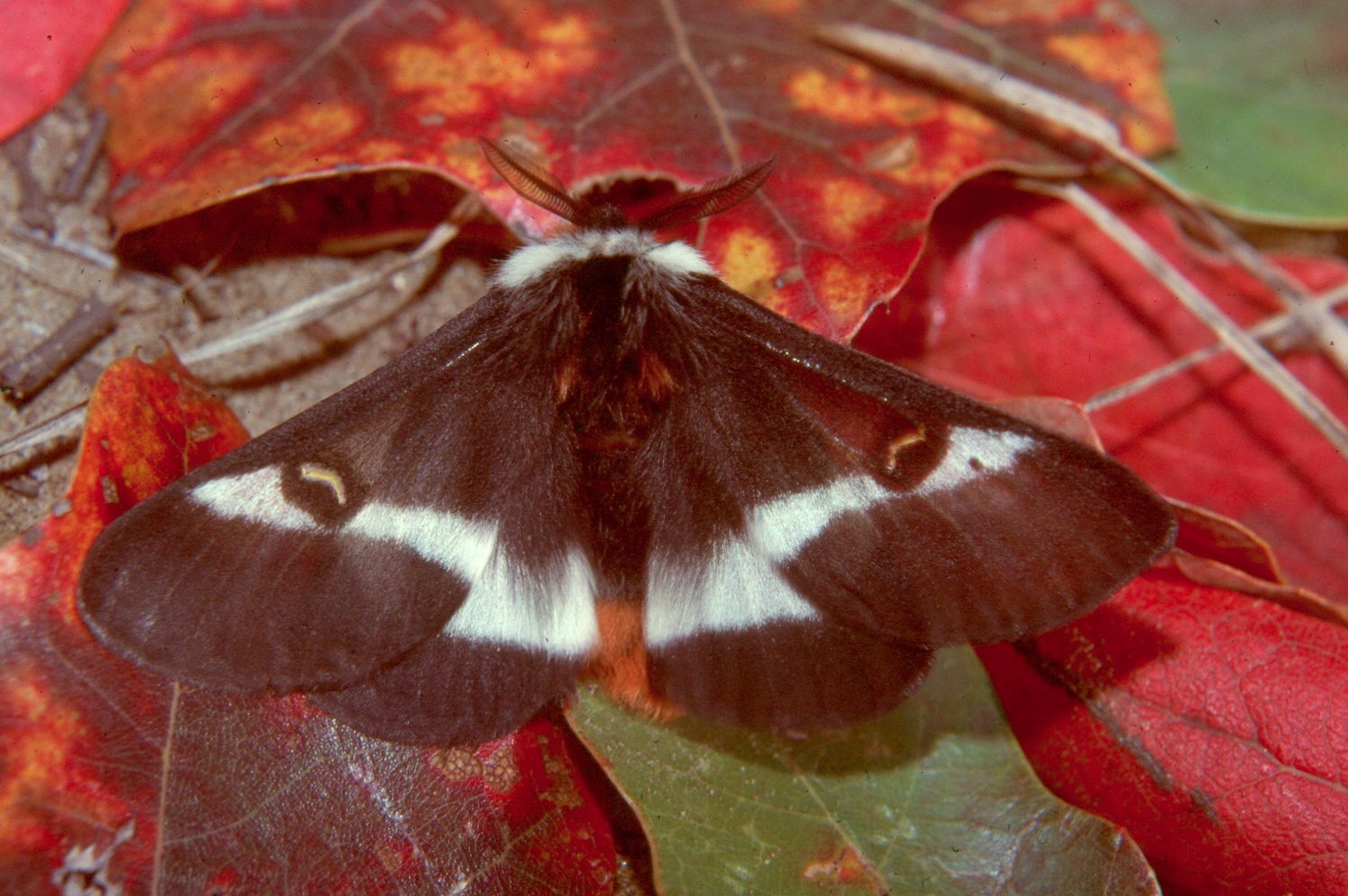It is very difficult to select memories to reminisce about after 45 years with the Long Island Pine Barrens Society, all to secure the permanent protection of the Long Island Pine Barrens. Literally hundreds of memories from hikes and field trips, speaking engagements (scores of slide lectures about the Pine Barrens to diverse audiences), public hearings, court testimony, lobbying activities in the halls of Hauppauge and Albany, and, of course, quarterly board meetings of the Society at which we strategized to set policy and direction.
The Following are but a few.
I remember well several hikes, a few of which were in the Dwarf Pine Plains. Early in the Society’s existence we led many hikes to promote public awareness of the Pine Barrens. One of the more successful hikes involved co-founder John Cryan leading a walk to see buck moths during their annual autumn mating flight. Prior to the start of the hike John found several female buck moths. He put them in a fine wire cage where, hanging from the top, they began to do what female buck moths do: release pheromones to lure males to create the next generation of moths. And lure they did for quickly a dozen or so males, adorned in their beautiful white, black, and orange coloration converged on the cage trying to get inside to mate! The more than 50 participants were excited to see up close one of the iconic species of the Pine Barrens.
The Dwarf Pine Plains have been the site of several other memorable encounters. Leading a hike of a dozen people on a full moon night to listen for “goatsuckers”, such as whip-poor-wills and chuck-will’s-widows about a decade ago, we walked through the Dwarf Pine Plains listening for their distinctive calls. By the end of the hike, we had heard a dozen “whips” and three “chucks.” I’ve two special memories from hiking the Plains in which I came across two rare Long Island mammals – striped skunk and grey fox. Both were foraging for food and because they were so focused on their search, I was able to get a wonderful close up view of each species.
Another hike that I led with co-founder Bob McGrath took place further west in a large expanse of Pine Barrens, Manorville Hills, the largest block of contiguous open space found on Long Island. Approximately 25 participants were treated to a stunning display of an eastern hognose snake going into its famous “death feign act” whereby the disturbed snake, coiled alongside a sandy trail, went into spasms and convulsions, turning over on its back, with its tongue hanging out of its mouth, “dies.” Another “herp” I have a special memory of was seeing a congregation or breeding congress of tiger salamanders in a pond in Manorville. Male and female salamanders were entwined in a ball in the water in a breeding frenzy; this activity results in male salamanders laying sperm packets or spermatophores on the pond bottom, which a female salamander will straddle and bring it into her body.

A “threatening” Hognose Snake. Photo by Bob McGrath
Another memory I have with Bob is when we traveled to the World Trade Towers to participate in an Army Corps of Engineers. The hearing was focused on the filling of freshwater wetlands just south of Swan Pond to construct a golf course. We made the mistake, being young, enthusiastic and foolish, of running up 45 flights of stairs. We were winded quickly and the hearing didn’t go much better as the Corps, mind-bogglingly, issued the permit to allow for the destruction of the wetlands. To this day, the golf course remains an ecological travesty – a use of the land that destroyed wetlands and forest, and which continually inputs fertilizer into a naturally nutrient poor ecosystem.
The Society has conducted a fair amount of lobbying in advancing the protection of the Pine Barrens and two events stand out. Mike Deering, who was Society president for a while, and I were at the Suffolk County Legislature in Hauppauge to express support for an amendment to the Suffolk County Drinking Water Protection Program; at that time the land acquisitions were “pay-as-you-go”, meaning the funding used for land purchases was made available on an annual basis. Since land values were escalating rapidly, we argued the County should bond for the money as this would result in more properties ultimately preserved, even though the County’s overall amount of money would be reduced because of necessary interest payments on the bonds. We pigeonholed then county legislator Steve Levy, a very fiscally conservative lawmaker, in the hallway next to the auditorium speaking to argue our point that although the County would be required to pay interest, more acreage would be preserved – the very purpose of the land acquisition program. While Levy still voted against it, the measure, thankfully, was amended and the County bought lots of Pine Barrens properties.
Yet another significant memory was the first time I communicated with Dick Amper, the long-serving Executive Director of the Society. It was through a phone call on a Sunday night. Dick called to learn more about the Pine Barrens as he and other neighbors were fighting to stop a development from being constructed on the eastern side of Lake Panamoka. I could tell he was quite interested and intense and a very quick learner. One thing led to another, and the development was stopped, the property preserved, and the Board of the Society realized that Dick was a very talented person. — a many decade long relationship was born. Combining Dick’s public relations and media acumen with the other talents of Society board members proved to be an unbeatable combination!
Perhaps the memory that is foremost in my mind occurred on a spring night in Albany in 1993. After many months of negotiating between the LI Pine Barrens Society and the towns and developers, the Long Island Pine Barrens Protection Act was passed by the New York State Legislature. The same night the state legislation creating the Environmental Protection Fund passed, providing funding to purchase lands in the Core Preservation Area of the Pine Barrens. It was a great night and fun to be sitting in the gallery of the NY State Assembly when the final vote was tallied. A close second was the press event at Southaven County Park, several weeks later, at which Governor Mario Cuomo signed the measure into law.
These memories depict “The Way We Were.” With the Society’s advancement of the “Best of the Rest” Initiative, I’m hoping we’ll develop many more pleasant watercolor memories to add to the collection.
By John Turner, Long Island Pine Barrens Society Founder
Cover Photo by John Cryan


